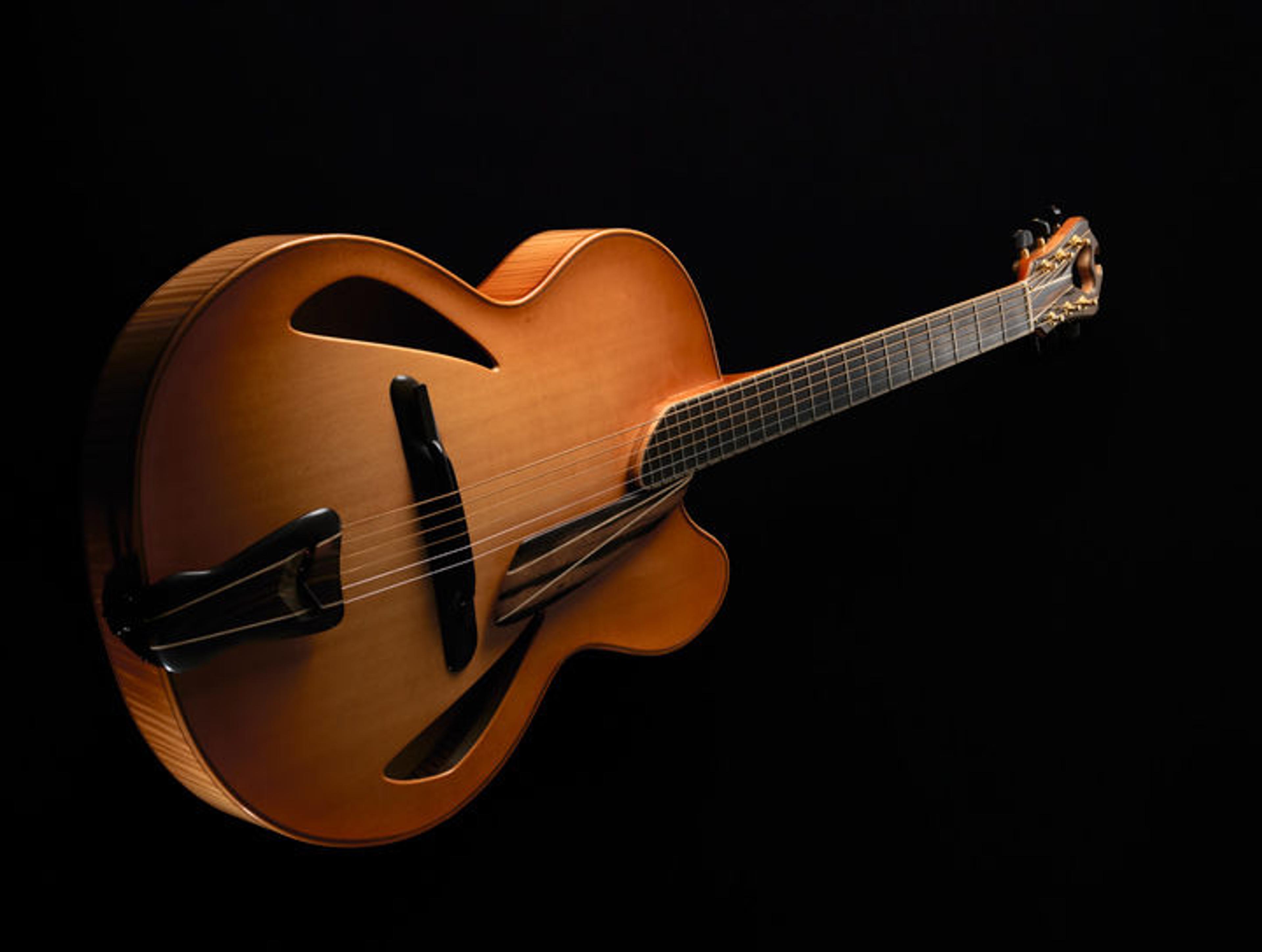
James D'Aquisto (American, 1935–1995). Archtop guitar, 1993. Greenport, New York, United States. Spruce, maple, ebony; W. 17 in. The Metropolitan Museum of Art, New York, Gift of Steve Miller, 2012 (2012.246)
«The Rock and Roll Hall of Fame is holding its annual induction ceremony on Friday, April 8, at the Barclays Center in Brooklyn. Among the list of 2016 inductees—which includes Cheap Trick, Chicago, Deep Purple, and N.W.A.—is Steve Miller, the donor of an extraordinary archtop guitar to The Met built by James D'Aquisto, one of the 20th century's most important builders.»
Although most of the instruments used by Steve Miller in his concert performances are electric guitars, he sought out D'Aquisto in the 1980s, when he was looking for an archtop guitar for personal use. The two men became friends and, in addition to the archtop guitar now in The Met collection, D'Aquisto also built electric guitars for Miller like those featured in The Met's 2011 exhibition Guitar Heroes: Legendary Craftsmen from Italy to New York.
Archtop guitars have several features similar to those found on the violin, including a carved top and back, a floating bridge held in place by the string tension, and a tailpiece. Archtops became popular as rhythm instruments in big bands of the Swing era because of their powerful, percussive tone. Later, in the 1950s and '60s, guitarists used them with electrical pickups as lead instruments in small jazz ensembles.

Left: Detail view of the D'Aquisto guitar's headstock, showing inlaid lines of lighter-colored wood and a modern take on the shape
James D'Aquisto was an innovative builder of archtop guitars, and his designs marked a radical departure from traditional instruments. The Met's guitar represents the culmination of D'Aquisto's designs and his belief in the use of natural materials over synthetic, as evidenced by his use of Macassar ebony on the bridge, tailpiece, and fingerboard. Instead of the Art Deco motifs used to decorate traditional archtop guitars, D'Aquisto introduced more modern ideas, as can be seen in the shape of the sound holes and headstock. The only additional decoration introduced to this guitar is a set of asymmetrical inlaid lines of lighter-colored wood on the tailpiece, fingerboard, and headstock. This guitar is one of a few instruments built in this modern style by D'Aquisto before his death in early 1995.
In this audio clip from the multimedia feature that accompanied the Guitar Heroes exhibition, Steve Miller talks about James D'Aquisto. View the transcript.
Related Links
Of Note: "Grammy Winners at the Met" (February 4, 2015)
Of Note: "Rosanne Cash Reflects on Her Relationship with the Guitar" (March 10, 2014)